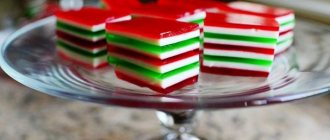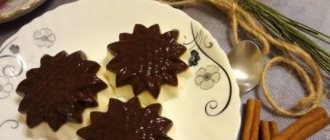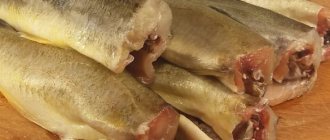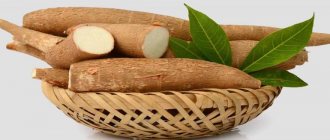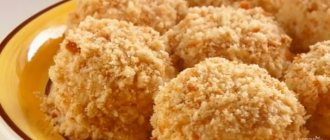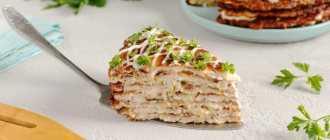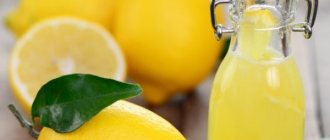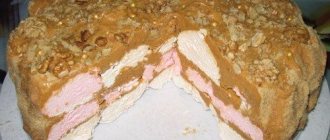What is the difference between jelly and jam and other preparations?
Berry jelly is often replaced in conversation with jam or confiture. But any cook will immediately say that this is wrong. How does jelly differ from its prepared counterparts?
Jam is usually called a sugar-berry or fruit mass, during the preparation of which the berries are boiled. In jam, on the contrary, the main task of the cook is to keep the berries safe and sound. To do this, the jam is cooked for a short time, several times, so that it has time to cool down between cooking times.
Confiture is a jelly-like berry mass, which is a type of jam. In finished form, it is permissible to have whole fruits or pieces in the confiture.
But the jelly is individual. This is not a type of preserve or jam. It is prepared with the addition of gelling agents: gelatin or agar-agar. And the appearance of the jelly is similar to jelly, and not liquid jam.
So, we have decided on the differences, we can move on to choosing cherries for the blanks.
You can make a delicious and aromatic jelly from cherries.
Cherry jelly: benefits and harms
Cherry jelly has a rich ruby color and looks beautiful on the table. In addition, it is tasty and healthy thanks to cherries, which contain:
- pectins that normalize digestion;
- glucose, fructose, organic acids, carotene, easily absorbed by the body;
- vitamins B1, B9, C, PP;
- trace elements: copper, potassium, magnesium, iron.
Cherries are useful for anemia, arthrosis, constipation, problems with the lungs and kidneys.
Calorizers also have a beneficial effect on the human body.
- Gelatin restores cartilage and joints. Thanks to the presence of collagen, the condition of hair and nails improves. It is important for the nervous system and brain, has a positive effect on metabolism and heart function.
- Pectin is a good cleanser of the body from toxins and harmful substances.
- Agar-agar is rich in iodine, calcium, iron, it cleanses the body of toxins.
Cherry jelly is harmful only to people who cannot tolerate some of its components. It is not advisable for people suffering from ulcers or acute gastritis to indulge in this delicacy.
What berries are suitable for jelly?
Any variety is suitable for this kind of preparation. You can take both sour and sweet berries. Even mixing varieties when preparing a delicacy gives a surprisingly delicate and refined taste. The main thing is that the berry is fresh and ripe, but not overripe. Frozen cherries should not be used. It is perfect for compotes, but freezing will negatively affect the consistency and taste of the jelly.
- We take fresh cherries, just picked. After all, this berry has a very thin and delicate peel. And cherries can easily go bad, even if they are slightly damaged.
- Berries for jelly must be whole, without cracks. Rotten and burst ones are removed during selection from the total mass.
- If we plan long-term storage throughout the winter, we remove the seeds.
- When the jelly is prepared for immediate use, the seeds do not need to be removed. They impart a light almond aroma to the product.
- Be sure to remove the stalks.
Cherries for jelly are selected ripe and without blemishes.
Cherry jelly with apple juice (without gelatin)
Another option for preparing healthy vitamin sweets for the winter. It's easy and quick to prepare. Thanks to the pectin in apple juice, the jelly hardens well and acquires a mild taste.
Products:
· washed pitted cherries – 1 kg;
· sugar – 0.5 kg;
· natural apple juice – 250 ml;
· water – 100 ml.
Recipe:
1. The cherries are poured into a cooking container and filled with water. Steam until soft over low heat.
2. Grind the fruits hot through a fine sieve.
3. Combine cherry puree with apple juice and sugar. Stir.
4. Boil the mass over low heat by half.
The finished cherry jelly with apple juice is poured into jars and sealed. After cooling, transfer to storage in a cold basement.
How to make dessert more flavorful
Fragrant herbs and spices will give the jelly a more refined taste.
The French add tartaric acid to the jelly, 1 tsp. for 1 kg of berries. It is poured into the delicacy immediately after cooking. Acid is not only a good preservative, but also enhances the alluring aroma of cherries. You can buy this ingredient in the spice departments of supermarkets. If it was not possible to find a solution, it can be replaced with dry red wine at the rate of 0.5 tbsp. for 1 kg of cherries.
To make the jelly more fragrant, after cooking, add vanillin (at the tip of a knife). Mix gently so that the berries remain intact.
Cinnamon (on the tip of a knife) and sweet peas (2-3 grains) add a touch of mystery to this delicacy. They highlight the taste of cherries, making the aroma more subtle and refined.
If you want to add a little daring touches to the smell and taste of the jelly, you can add a few cloves 5 minutes before the end of cooking. It’s important not to overdo it, it’s better to stop at 2-3. Larger amounts may make the aroma too strong.
Cinnamon will add a hint of mystery
To make the delicacy more flavorful, add lemon or orange zest when cooking. It is very important, when cutting the zest from the fruit, not to grab the white edge, otherwise the jelly will taste bitter. The zest is cut in a spiral. When cooking, it is placed in the cherry mixture, and then removed with a slotted spoon or spoon.
Speaking about mint as a taste and smell enhancer, it must be emphasized that there are quite a lot of varieties of this plant. These include spearmint, peppermint, longleaf mint, tarragon, field mint and apple mint. Not every one is useful for jam, compotes or jellies. We can use only 3 of these varieties for cooking:
- Curly mint. It does not have a sharp cooling taste, but at the same time mint gives a wonderful refreshing effect. It is used in cooking and homemade preparations in fresh and dried form.
- Many nationalities actively use long-leaf mint just to add flavor to drinks, desserts and preparations. It is also used to identify the more subtle taste of marinades, fermented foods, marmalades and jams.
- Peppermint can be added fresh or dried. But, as a rule, it is not combined with spices. Peppermint is self-sufficient. Like spices, its dosage is minimal. Fresh mint is added from 1 to 5 g, dried mint 0.2 - 0.5 g per serving. Add spice 5 - 10 minutes before readiness.
Peppermint is added shortly before the jelly is ready.
Reviews of housewives about cherry delicacy
You can make jelly.
Delicious! Squeeze the juice, add sugar (I think 1 to 1), heat until the sugar dissolves and pour into jars. When it cools, it will thicken. But it must be stored in the refrigerator. shrimp https://www.kid.ru/forum/txt/index.php/t10116.html
I cooked it like this: first I removed the seeds, then I made a kind of puree with a blender, put 300 grams of water per 2 kg of cherries, heated it all (5-6 minutes) and strained through cheesecloth... I cooked the remaining juice until it was reduced by half and covered it with sugar. 1 liter of juice 700 grams of sugar and 2 grams of citric acid... and I still cooked it all for 30 minutes...
Sun@ https://www.u-mama.ru/forum/family/cook/149633/index.html
Jelly is perhaps the healthiest and least sweet dessert prepared for the winter. Due to the small amount of sugar, you can eat it without worrying about your figure. Therefore, if the cherry harvest pleases you, prepare jelly.
How long does a product prepared for the winter last?
Jars of jelly should be stored in cool and dry places. It is important that the ventilation in the cellar or basement works well, preventing the air from stagnating. The temperature for an unpasteurized product ranges from 0 to +10o C. This jelly, according to experts, can be stored for no more than 6 months.
Berry delicacies that have undergone pasteurization and sterilization procedures can also be stored at +20 ° C. But this is the temperature maximum for fruit preparations. If the room is warmer, then there is a high probability that the product will become sugary or cloudy. When kept in appropriate conditions, pasteurized jelly is stored for about 12 months from the date of manufacture.
The nutritional value
Per 100 g of jelly made from cherries, there are about 60 kcal. The product also contains a low content of proteins (2.8%) and carbohydrates (14%). This dish has a rich color and transparent texture.
Cherries contain a huge amount of useful vitamins and amino acids.
However, after processing the berry loses some of its properties. But still, cherry jelly will contain vitamins B, PP, C and microelements such as iron, calcium, sulfur and phosphorus. Preparation includes the option of using fresh, frozen or dried cherries. Even in some cases they make a treat from cherry juice.
Pasteurization and sterilization
Berry preparations are usually subjected to heat treatment.
Pasteurization
Pasteurization is a method of heat treatment of food products with the need for their disinfection and longer storage. This effect is achieved through the destruction of bacteria and microorganisms. The method was proposed by the French scientist Louis Pasteur in the mid-19th century. The method consists of one-time heating of the liquid to a temperature of 60–90 degrees. The countdown begins from the moment the set water temperature is reached. The duration of the process depends on the type of workpiece. Berry jelly is usually pasteurized for a quarter of an hour (0.5 l jars) at a temperature of 85o C.
Pasteurization is used for fruits, berries and vegetables whose cell sap is acidic.
How to pasteurize berry preparations
- Place a clean rag or wooden grate at the bottom of the bucket or pan.
- Carefully pour water into the pan. Its quantity is easy to determine - the liquid level should reach the shoulders of the jar.
- Place the jars filled with jam and cover them with lids. To prevent the lids from accidentally lifting and water from getting into the workpiece, place a weight on top. For this purpose, you can take any large flat plate.
- Turn on the heat and bring the water to the required temperature.
- We pasteurize the dessert for the period specified in the recipe.
- After heating the product, the weight is removed, and the jar, without lifting the lid, is removed from the water using special tongs and placed on a table with a soft bedding (towel or clean rag).
- The jars are hermetically sealed using a special sealing key.
Using tongs you can easily remove the jar from hot water
Sterilization
Sterilization is the basis for long and successful storage of workpieces. This process is a heat treatment of the product at a temperature of 115–120 degrees for 15–30 minutes. In addition, a popular steam sterilization method is treatment with steam under pressure for 20 minutes at a temperature of over 130 degrees.
Tips for making cherry jelly
Any variety of cherries is suitable for jelly. The fruits can be sour or sweet, small or large. Most recipes use fresh cherries; frozen berries or canned juice also make a delicious dessert. To add a variety of flavors, lemon/orange zest or juice, vanilla, cinnamon, cloves, and dry wine are added to cherry jelly.
Dishes for cooking fruit mass should be enameled, with a thick bottom. To gel without adding thickeners, cherries are boiled for a long time. It is more convenient and faster to do this in wide basins. Aluminum utensils are not used in the preparation of sweet preparations - when oxidized, the jelly may darken and acquire an unpleasant metallic taste.
Cherry jelly is served in bowls, bowls, and glasses. Or remove from the molds and turn the gelatinous mass onto portioned plates. Decorate the dessert with whipped cream, fresh berries, pieces of fruit, and mint leaves. Homemade winter preparations are used as jam, served with tea, used for filling pies, layering cakes, etc.
Useful links:
Which jelly is considered a perishable product and how to store it
Jelly with a small sugar content should be refrigerated, but even in this way it is not recommended to store it for longer than 90 days. This is explained by the fact that sugar, in combination with natural pectin contained in the berry, forms a gelling mass. The amount of sugar in the jelly determines its gelatinousness and transparency - the main factors determining the quality of the dessert. Granulated sugar in a ratio less than 1:2 makes the delicacy more liquid, prone to fermentation and mold, which reduces the quality of the product. Thus, the product becomes perishable, and it is better to store jelly with a sugar content of 350 to 500 g per 1 kg of cherries in the refrigerator.
Dessert jelly
This dish is usually prepared for holidays. Jelly is most often served in portions, pouring it from a mold onto a plate or preparing it in vases. You can use fresh or frozen cherries for the jelly. What to take:
- 200 g cherries;
- 60 g sugar;
- 600 ml water;
- 20 g gelatin.
The suggested quantity makes 6 servings. Pour 100 ml of cold boiled water into a bowl, add gelatin and leave to swell for 30 minutes. Wash the berries, put them in a saucepan, add the remaining water (500 ml) and put on fire. Pour sugar into a saucepan, bring to a boil, then simmer for 2-3 minutes and remove from heat. Let the resulting cherry compote brew and cool until warm. The cherries should settle to the bottom.
While the compote is warm, strain it through a sieve, and the berries can be eaten. Meanwhile, dissolve the swollen gelatin in a water bath or microwave in defrost mode for 10-15 seconds. You can just do it on the stove, the main thing is not to let it boil. Pour gelatin into cherry compote and stir. Pour into vases or molds or vases. Place in the refrigerator for 4 hours.
Note: To easily remove the jelly from the molds, you need to place them in a bowl of hot water for 5 seconds. Then turn the mold over and the jelly will separate from the walls.
Which lids are best to use for winter preparations?
A seaming wrench is used to seal a metal cap without a thread.
Jelly can be rolled up with a special key (for this, metal lids without threads are used); for jars with screw threads, metal screw lids are used. But to facilitate the process of closing the blanks for the winter, you can use plastic ones. Simply immerse them in hot water for half a minute and close the jars tightly. This will require a minimum of effort and will not affect the deterioration of sealing quality and shelf life.
The cellar or basement where the jelly will be stored must be dry and ventilated
The nutritional value
Cherry jelly is a low-calorie treat
: it contains only 56 kcal per 100 grams of product. It contains only 2.8% protein and 14% carbohydrates.
It is prepared from any berries: fresh, frozen, dried. Sometimes - based only on cherry juice.
To ensure that the calorizer does not worsen the taste of the dessert or reduce its transparency, it should be added in an amount strictly corresponding to the recipe. Moreover, it is best to use a pure product, without flavoring additives, and not a semi-finished product from a bag.
You can achieve a special color and taste of the delicacy by adding lemon, liqueur or red wine to cherry jelly. These ingredients will also give it a special aroma.
Cherry delicacy recipes
Let's look at a variety of recipes for making jelly.
Pitless cherry jelly
We will need:
- Cherry - 1 kg;
- apple juice - 1 tbsp.;
- sugar - 500 g.
Preparation:
- Remove pits from washed cherries. This can be done with a special machine or a pin.
- Steam in a saucepan with a small amount of water. The pan must be covered with a lid.
- After 3-5 minutes, remove the mass from the heat.
- Wipe through a sieve or colander.
- Gradually add apple juice and sugar to the resulting cherry puree.
- Place on low heat and cook until thickened.
- Pour the hot jelly into sterile jars.
- Tightly tighten the metal lids with a special wrench.
The degree of thickening of the jelly is checked as follows: drop a little jelly onto a clean saucer. If the product hardens quickly and does not spread, then the delicacy is ready.
To prepare a delicious delicacy from cherries, first remove the pits
Jelly with “Zhelfix” from pureed cherries
Many housewives have a pertinent question: “Zhelfix” - what is it? Just a gelling additive. In addition to other components, it contains large quantities of natural pectin, which is obtained from apples and citrus fruits. Gelatin, we remind you, is of animal origin, and “Zhelfix” consists only of plant substances, in addition, it completely preserves the color, taste and vitamins of the berries. If desired, “Zhelfix” can be replaced with pectin. The difference will not be noticeable.
- Cherry - 1 kg;
- sugar - 500g;
- "Zhelfix" - 1 pack.
Preparation:
- To quickly remove seeds from berries, boil the cherries covered over low heat for 3 minutes.
- The juice formed as a result of cooking is poured into a separate bowl.
- Using a mixer or blender, beat the cherries in a saucepan until pureed.
- Rub the mixture through a sieve into the juice. Through the small cells, the pulp easily penetrates into the future jelly, and the seeds remain in the strainer.
- Mix “Zhelfix” with 2 tablespoons of sugar.
- While stirring, pour the Zhelfix mixture into the slightly warm cherry mixture.
- Bring to a boil.
- While stirring the mixture with a wooden spoon, add the remaining sugar. After which the cherry should boil again.
- After boiling, cook for 3 minutes.
- Pour into dry sterilized jars.
- Close the lids tightly and put away until winter.
Video: jelly with “Zhelfix”
Cherry dessert with gelatin
This is a type of jelly, but using gelatin. The cooking process itself takes little time and, despite the long-term settling of the juice overnight, is considered a convenient and fast method.
- Cherry - 1 kg;
- sugar - 700 g;
- instant gelatin - 2 tbsp. l.
Preparation:
- Wash the cherries thoroughly and remove the pits.
- Add sugar.
- Mix carefully.
- Place the cherries in a cool place overnight. After this time, the berries will release juice.
- Now put the pan with the cherries on low heat.
- Stirring, bring to a boil and cook for 3-4 minutes.
- We dilute the gelatin with cold boiled water, then heat it until dissolved (do not boil!).
- After the cherries have boiled for the required time, add gelatin, stir, turn off the heat, and skim off the foam.
- Immediately place the hot jelly into dry and sterile jars.
- Cover tightly with plastic lids.
- Then we turn the container upside down and wrap it in a towel for 10–12 hours.
- The jelly is ready and can be put away in the cellar.
Important! Gelatin cannot be boiled, as this will worsen its gelling properties.
Instant gelatin is convenient because it does not need to be soaked and wait for the granules to swell
Cherry juice jelly
We will need:
- natural cherry juice - 1 l;
- sugar - 1.5 kg.
Preparation:
- Pour the juice into the pan.
- Add granulated sugar there and mix.
- Place the container with juice on the stove.
- Stirring, bring to a boil.
- Boil over low heat until foam appears.
- When foam appears, remove it from the surface with a spoon.
- Cook the juice and sugar until the mixture thickens.
- Don't forget to stir all the time so that the delicacy doesn't burn.
- Place into sterilized jars.
- We roll up the jars.
- The resulting canned food is sent for storage in the basement or cellar.
Video: cherry jelly for the winter without gelatin
The unique taste of felt cherries
Ingredients:
- Felt cherry - 1 kg;
- sugar - 1 kg.
Preparation:
- Wash the berries thoroughly and remove the stems.
- We rub the cherries through a sieve - you should get a puree.
- Add sugar.
- Mix.
- Cook until thickened.
- We distribute the finished treat into sterile jars.
- Close with screw-on metal lids.
- We put it in the cellar or pantry.
Felt cherry has a velvety flavor and is excellent for jelly.
Jelly with seeds in a slow cooker
Required Products:
- Cherry - 500 g;
- sugar - 2 cups;
- granulated gelatin - 2 tbsp. l.
Preparation:
- Cover the berries with sugar.
- Leave for 2 hours until the juice releases.
- Mix.
- Set the multicooker to “Stew” and set the time: 1 hour.
- In a separate bowl, dissolve gelatin in the required amount of water.
- Let the sweet berry mass cook.
- Fill the gelatin with water. Before adding to the jelly, heat the swollen gelatin.
- As soon as the multicooker signals to stop cooking, add gelatin, mix and distribute the dessert into sterile jars.
- Roll up the lids with a special key and turn them over.
- We wait until the workpiece cools down and put the jars in the pantry or cellar.
Prepare jelly in a multicooker using the “Stewing” mode
Is it possible not to cook berry jelly?
As it turned out, it is possible. Fruit juice is gelled with a pectin content of 1% per 100 g of berry mass. Cherry itself is rich in pectin and contains from 6 to 11.4% of this substance per 100g. Depending on the ripeness of the berries. The riper the cherry, the greater the amount of pectin it contains. But even unripe berries can be used for jelly. The hardness of cherries and other berries and fruits is explained by the fact that they contain protopectin. When the berries ripen or are exposed to temperature, the protopectin breaks down, releasing the pectin they contain. That is why the recipe calls for adding hot water. Of course, the jelly will not look exactly like store-bought jelly. But sugar, in combination with pureed berries, will really gel, as it is a thickener. You won't get a sweet liquid syrup when cooking.
- Sugar 400 g;
- cherry - 400 g;
- hot water - 50 ml.
Preparation:
- Remove the pits from the washed cherries.
- We pour the released juice into a separate bowl - we won’t need it anymore. You can give it to children to enjoy.
- Grind the cherries through a meat grinder.
- Add sugar and mix well until completely dissolved.
- Add hot water and mix again.
- We roll them into jars, having previously placed parchment under the lids. The properties of parchment help prevent mold from appearing on jelly and other products. It serves as a kind of barrier between the dessert and the environment where the fungus occurs.
Video: cherry jelly for the winter with gelatin
Marmalade
You can make delicious cherry marmalade with gelatin or pectin at home.
Recipe with gelatin
The disadvantage of dessert with gelatin is that it needs to be stored only in the cold - at room temperature it begins to melt, so it is recommended to prepare it in limited quantities in order to consume it immediately. What to take: 400 g of fresh cherries, 100 g of granulated sugar, 10 g of gelatin. How to do:
- Rinse the cherries, drain and dry. Remove seeds from berries. Grind the fruits in a blender until pureed.
- Rub the cherry puree through a sieve or cheesecloth so that the texture is as uniform as possible.
- Soak the gelatin for 30 minutes in cold boiled water to swell.
- Place the resulting mixture in a saucepan, put on fire and bring to a boil. After this, add sugar and cook, stirring, over low heat for about 15 minutes.
- Remove the boiling cherries and sugar from the stove. Place gelatin in a saucepan with cherries and mix thoroughly until it is completely dissolved.
- Strain the prepared mass through a sieve and pour into molds or one large mold.
- Place in the refrigerator for three hours to harden.
Remove the finished marmalade from the mold and cut into cubes. You can roll it in powdered sugar, sugar or coconut flakes.
With pectin
What to take:
- 600 g fresh pitted cherries (frozen can be used);
- 300 g granulated sugar + 50 g for mixing with pectin;
- 30 g apple pectin;
- 10 ml water;
- 8 g citric acid.
To prepare marmalade, you will need a culinary frame measuring 24x24 cm. Prepare the cherries: rinse, dry, remove the pits. If frozen berries are used, they must be thawed. Place the cherries in a blender bowl and puree until smooth. Cover the culinary frame with cling film, thus forming the bottom.
Mix 50 g of granulated sugar with pectin. Dilute citric acid in 10 ml of water until completely dissolved. Transfer the berry puree into a saucepan, pour 300 g of granulated sugar into it and mix well. Place the saucepan over medium heat, stirring constantly with a whisk to dissolve the sugar faster. Then add a mixture of pectin and sugar, mix well so that there are no lumps.
Reduce heat and continue cooking for about 10 minutes, stirring constantly. Remove the saucepan from the stove, add citric acid and mix thoroughly. Very quickly pour the mixture into the prepared pan. This must be done without delay, until the mass has set. Leave the marmalade in the mold for a day at room temperature. No need to cover.
After this time, run a sharp knife along the edge of the mold to remove the frozen layer of marmalade. Cut the treat into squares, rectangles or diamonds. Line a baking sheet or tray with parchment and place the marmalade on it. Let stand for another 12 hours. After this, it is ready to eat. Store marmalade in airtight containers.
